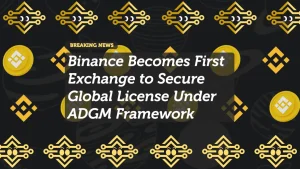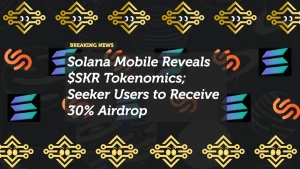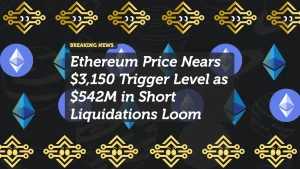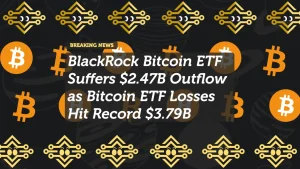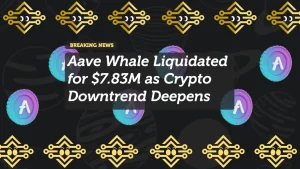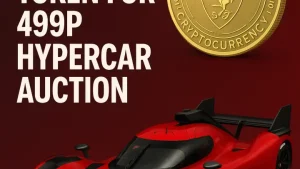
Play-to-Earn (P2E) and GameFi The Future of Blockchain Gaming
The gaming industry is undergoing a massive shift from the traditional pay-to-play model to earn-to-play, where players can generate real-world value through gaming. Play-to-Earn (P2E) games, powered by blockchain and NFTs, are at the forefront of this revolution.
This model falls under GameFi, a combination of gaming and decentralized finance (DeFi), where in-game assets have actual monetary value. Let’s explore how P2E works, the most promising projects, and the challenges facing this fast-growing industry.
What is Play-to-Earn (P2E) and GameFi?
Play-to-Earn (P2E) games allow players to earn cryptocurrency and NFTs through in-game activities. Unlike traditional games where assets are locked within a closed ecosystem, P2E games give players full ownership over their digital assets, enabling them to trade, sell, or even stake them for additional rewards.
GameFi takes this concept further by integrating DeFi elements like staking, lending, and yield farming into gaming economies. This creates self-sustaining virtual economies where in-game assets hold real-world value.
How P2E Works
- Play the Game – Players engage in battles, missions, or exploration within a blockchain-based game.
- Earn Rewards – Rewards come in the form of native tokens (such as AXS from Axie Infinity) or NFTs (such as digital weapons, land, or characters).
- Trade or Cash Out – Tokens and NFTs can be sold on exchanges or NFT marketplaces for real money.
This model transforms gaming from a hobby into a potential income stream, with some players earning substantial amounts from their gameplay.
Why is GameFi a Game-Changer?
Empowering Players with Ownership
Traditional games restrict asset ownership—skins, weapons, and characters are locked within a developer’s ecosystem. In contrast, P2E games use blockchain to give players true ownership of their assets, making them transferable and tradeable.
Creating New Digital Economies
Some players make a full-time income through P2E games, particularly in countries with lower living costs. The ability to earn and trade assets freely creates economic opportunities that never existed before in gaming.
Integrating DeFi into Gaming
Many GameFi projects include features like:
- Staking – Players can stake in-game tokens to earn passive income.
- Yield Farming – Some games allow liquidity farming, where users earn rewards for providing liquidity to decentralized exchanges.
- Play-and-Earn Models – Instead of requiring large upfront investments, games are moving towards hybrid models where players can start for free and earn as they progress.
Borderless and Inclusive
P2E games are accessible to anyone with an internet connection. Unlike traditional jobs or investment opportunities, these games do not require bank accounts or complex financial instruments, making them more inclusive.
Top Play-to-Earn and GameFi Projects to Watch in 2025
The P2E industry has grown significantly, with several standout projects leading the charge.
Axie Infinity (AXS, SLP)
- Players battle using NFT creatures called Axies to earn Smooth Love Potion (SLP) tokens.
- It sparked the P2E boom in 2021, particularly in Southeast Asia.
- Faces challenges related to high entry costs and sustainability concerns.
Illuvium (ILV)
- An open-world RPG where players explore, battle, and capture NFT creatures called Illuvials.
- Features AAA-quality graphics and full ownership of in-game assets.
The Sandbox (SAND)
- A metaverse platform where players can buy, build, and monetize land using SAND tokens.
- Major partnerships with brands like Adidas and celebrities like Snoop Dogg.
Gala Games (GALA)
- A gaming ecosystem hosting multiple blockchain-based games, including Town Star and Mirandus.
- Unlike Axie Infinity, it is not a single game but a network of P2E games.
Star Atlas (ATLAS, POLIS)
- A space exploration MMO where players trade resources, buy ships, and engage in battles.
- Built on the Solana blockchain for fast, low-fee transactions.
Gods Unchained (GODS)
- A blockchain-based trading card game similar to Hearthstone.
- Developed by former Magic: The Gathering creators, ensuring strong gameplay mechanics.
How Players Make Money in P2E Games
There are multiple ways to earn in P2E and GameFi ecosystems:
- Battling and Completing Quests – Players earn tokens through gameplay challenges and battles.
- Staking and Yield Farming – Some games allow staking of in-game tokens to earn passive income.
- Buying and Renting Virtual Real Estate – In games like The Sandbox, players can purchase land and rent it out for profit.
- Trading NFTs – Rare in-game assets like characters, weapons, and skins can be flipped for profit.
While the potential earnings can be high, not all P2E games have sustainable economies, making it essential to research before investing time and money.
Challenges and Risks of Play-to-Earn Games
While P2E games are exciting, they are not without their risks:
Unsustainable Economies
If more players cash out rewards than new players join, the in-game economy can collapse. This happened with Axie Infinity in 2022 when the value of SLP tokens plummeted due to inflation.
High Entry Costs
Some P2E games require expensive NFTs to start playing. At one point, entering Axie Infinity cost over one thousand dollars, pricing out many players.
Scams and Rug Pulls
Not all P2E projects are legitimate. Some developers raise funds through token sales, only to abandon the project, leaving investors with worthless assets.
Regulatory Uncertainty
Governments worldwide are debating whether P2E tokens qualify as securities, which could impact their future legality and taxation.
The Future of Play-to-Earn and GameFi
Hybrid Models Will Dominate
Games will likely combine free-to-play and earn-to-play models to attract mainstream audiences while keeping economies stable.
AAA-Quality Games
The next wave of P2E titles will have high-quality graphics and immersive gameplay, making blockchain gaming as competitive as traditional gaming.
Mainstream Adoption by Major Studios
Gaming giants like Ubisoft and Square Enix are exploring blockchain gaming, signaling that P2E is here to stay.
Stronger Tokenomics and Economic Models
Developers are learning from past mistakes, designing better reward systems that prevent inflation and economic collapse.
Final Thoughts Is GameFi the Future?
P2E and GameFi have reshaped the gaming landscape, offering players the ability to earn from their in-game efforts. However, sustainability challenges remain, and the long-term success of these games will depend on balancing playability, economic incentives, and blockchain technology.
With the rise of high-quality blockchain games, GameFi could become a mainstream gaming model, bridging the gap between entertainment and finance in the digital world.











